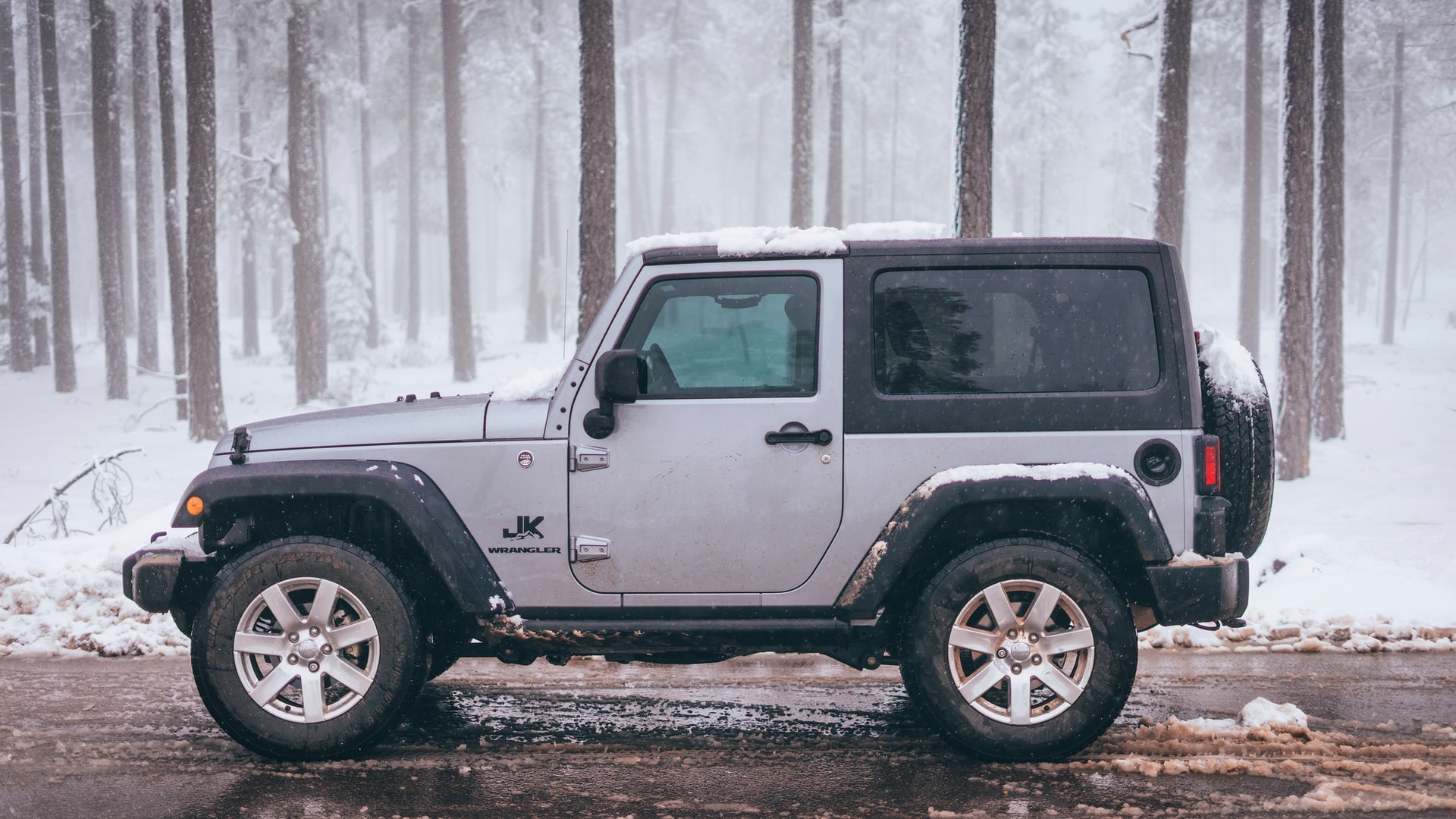If you often commute in snow or you simply want to make sure the drive after a snowfall is risk-free, then you may be considering a Jeep for the job. In this article, we’re answering the question “are jeeps good in the snow” as well as addressing other concerns you might have about driving Jeeps in winter. So without further wait, let’s hop in!
Are Jeeps Good in the Snow?
Unless your vehicle is properly equipped for winter driving, driving in the snow or on icy roads can be very dangerous. Fortunately, jeeps are built to withstand harsh weather conditions so they can easily tackle snowy or icy roads.
Generally speaking, Jeeps come with special tires for winter driving, more than average ground clearance, as well as 4-wheel-drives or all-wheel-drives. These features enable Jeeps to safely transport passengers across snowdrifts, slippers roads, and muddy trails.
Jeeps also house fog lights, powerful axles, and powerful headlights for improved visibility. Additionally, you get several advanced safety features including blind-spot monitoring, rear cross-path detection, forward-collision warning, lane-departure warning, and active emergency brakes.
Do Jeeps Keep you Warm in the Winter?
Even though winter conditions vary depending on the location you’re driving through, most Jeep models are designed to handle extreme winter conditions.
When it comes to keeping you warm, Jeep vehicles are constructed in a way that lets the interior heat up faster than others. As a result, the inside of the car where you’re sitting is pleasantly warm while driving in the winter.
Keep in mind that all open parts of the vehicle need to be closed for this to work efficiently. In summer, people tend to leave the doors or roofs open to promote better air circulation and reduce the accumulation of heat.
However, during winter, keeping everything closed will help keep you warm. Additionally, hardtops on jeeps can protect you from coldness leaking into the vehicle through the topside.
What are the Best Jeeps for Winter Driving?
Now that we’ve established that jeeps are good for driving in snow, here’s a list of our recommendations for the best jeeps for winter driving:
Wrangler
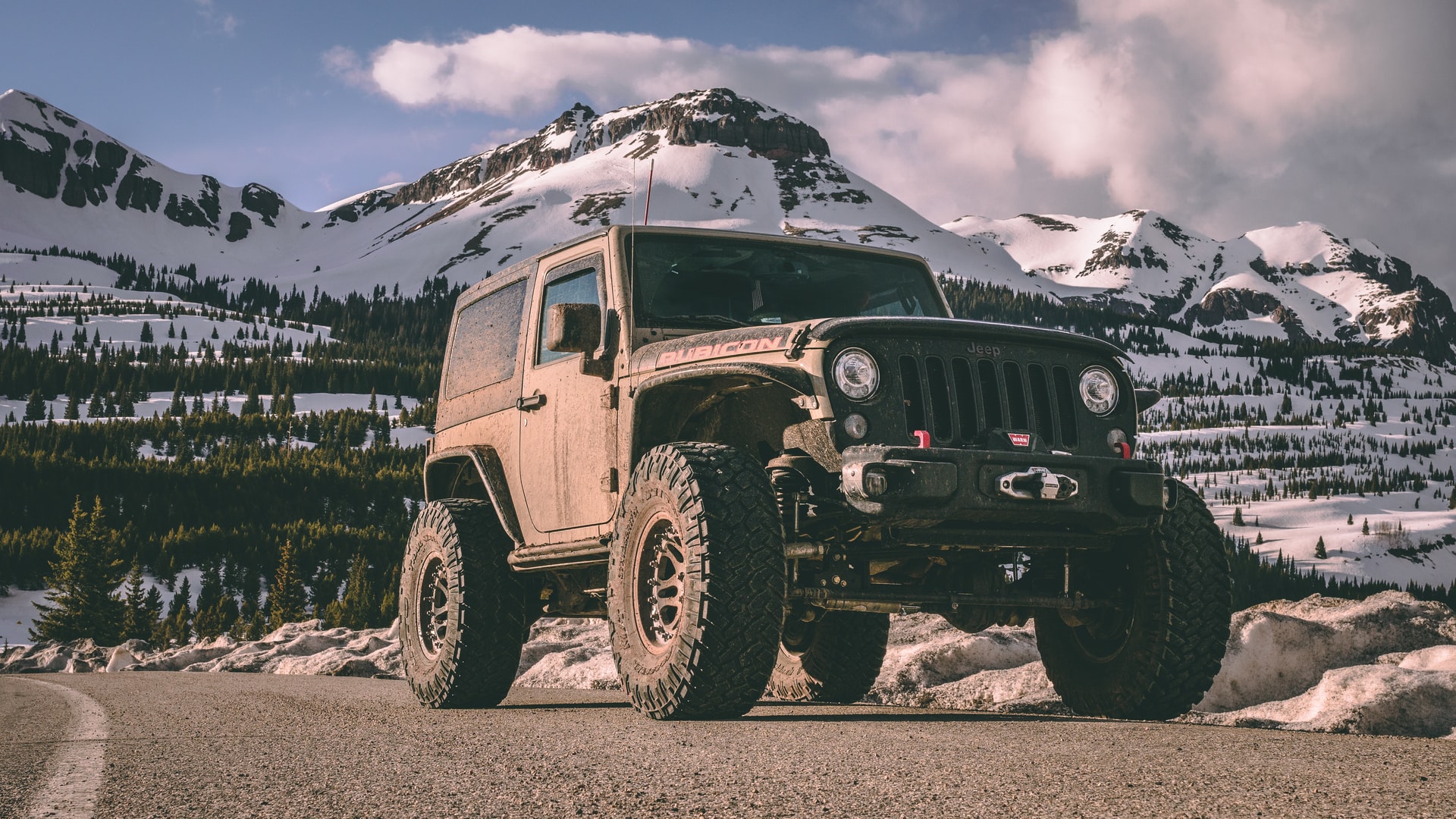
One of the most impressive models when it comes to driving in snow is the Jeep Wrangler. This model is equipped with a 3.9-liter Pentastar V-6 engine, a 4-wheel-drive system, and a 6-speed transmission to deliver an impressive performance on-road and off-road. The 2-liter turbo-4 engine is optional along with the 8-speed automatic transmission.
To enhance its driving capabilities through snow, ice, and sleet, the Wrangler is equipped with front and rear locking Dana 44 axles, large off-road tires, a front sway bar, as well as underframe skid plates. Moreover, it features a ground clearance above average.
The Wrangler has a minimum stock ground clearance of 8.3 inches, it can increase depending on the trim and model. This lets the vehicle drive over lots of accumulated snow and even drive through deep snow without much resistance, unlike many other cars.
The Jeep Wrangler comes in a 2-door version seating 4 and a 4-door version seating 5.
Cherokee Trailhawk
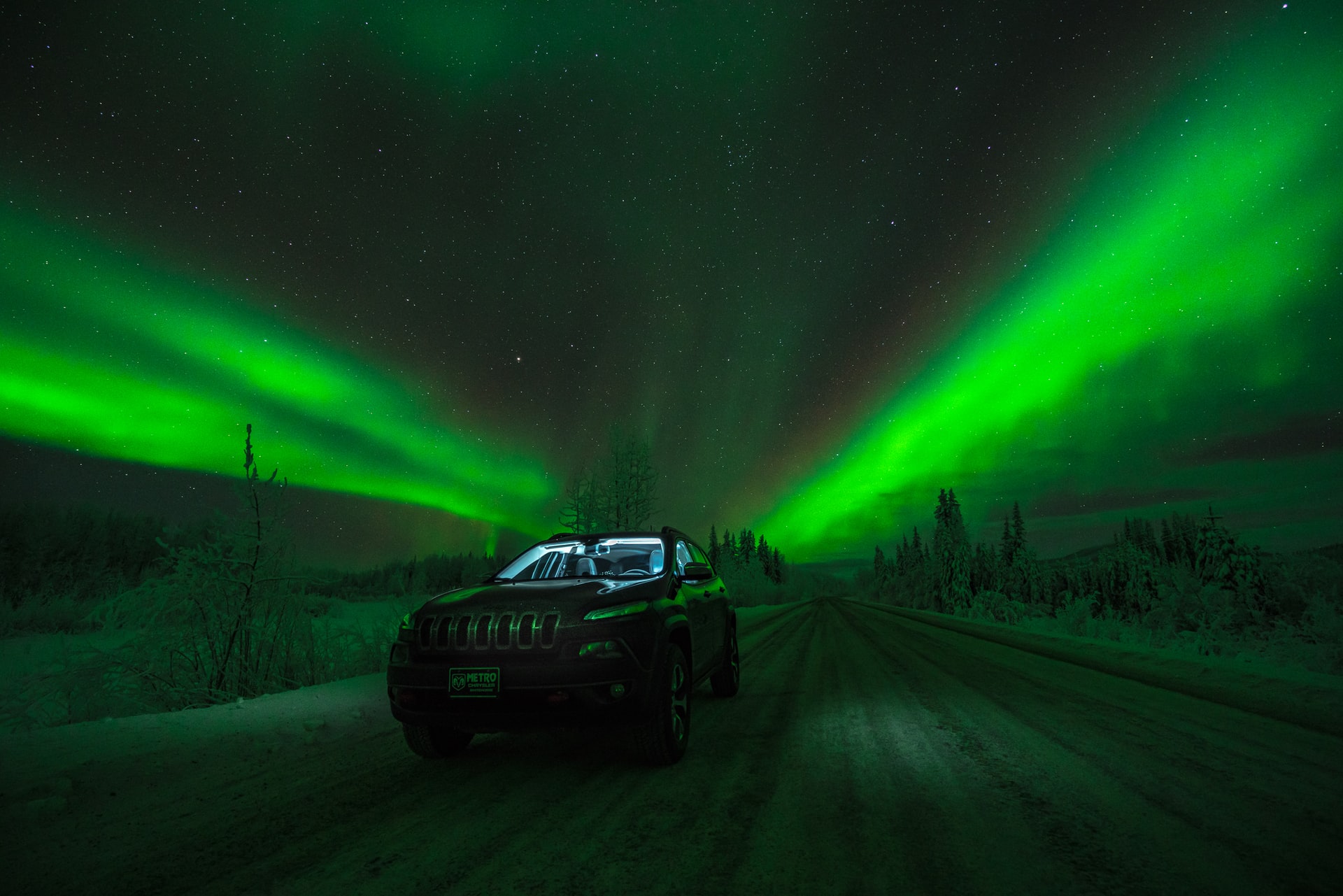
Sturdy and versatile, the Jeep Cherokee Trailhawk is quite popular among drivers since it can easily navigate a wide range of road conditions and tough terrains thanks to its capable 4-wheel-drive system.
The Cherokee Trailhawk offers 3 powerful engine options: 2-liter Turbo, 2.4-liter Tigershark MultiAir, and 3.2-liter Pentastar V-6. All the engines are coupled with a 9-speed automatic transmission.
Alongside the 1-inch suspension lift and underbody skid plates, the engines provide the Cherokee Trailhawk with a clear edge when you’re driving in a snow-bound area. Moreover, you can safely drive your vehicle across icy streams without worrying about water leaking inside. This is courtesy of the vehicle’s electrical and body sealing that prevents water from entering.
The Cherokee Trailhawk is also equipped with a Selec-Terrain traction management system featuring a snow mode. This mode inhibits wheel spin and reduces the risk of vehicular slippage.
Grand Cherokee
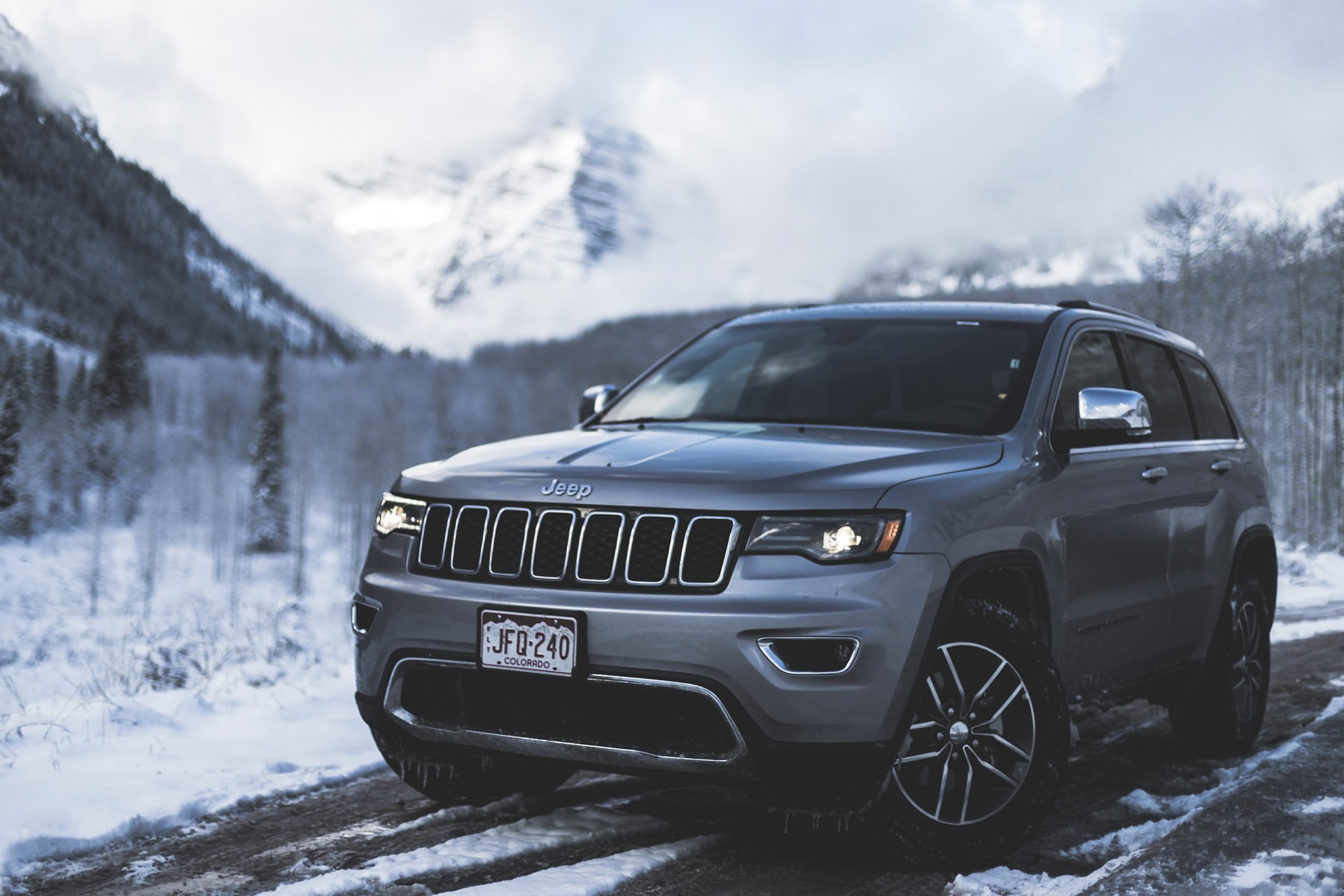
Another reliable option is the Jeep Grand Cherokee, which is also a favorite among drivers with or without their families.
The Grand Cherokee is a top-notch performer on the road with 5 engine variations (3.6-liter V-6, 5.7-liter V-8, 3.0-liter turbodiesel, 6.4-liter V-8, and 6.2-liter V-8) that you get as standard or optional on its 7 trims. All the engines are paired up with an eight-speed automatic transmission.
The Grand Cherokee vehicles utilize the Quad-Trac and Quadra-Drive 4-wheel drive systems, which provide them with outstanding traction to give you better control on snowy roads and slippery terrains.
What’s more, the Grand Cherokee is equipped with built-in snow and mud modes to enhance your driving experience. Thanks to the Quadra-Lift air suspension system, you can raise or lower the vehicle as much as you prefer to boost your experience on the road while boosting safety and economic fuel consumption.
Renegade
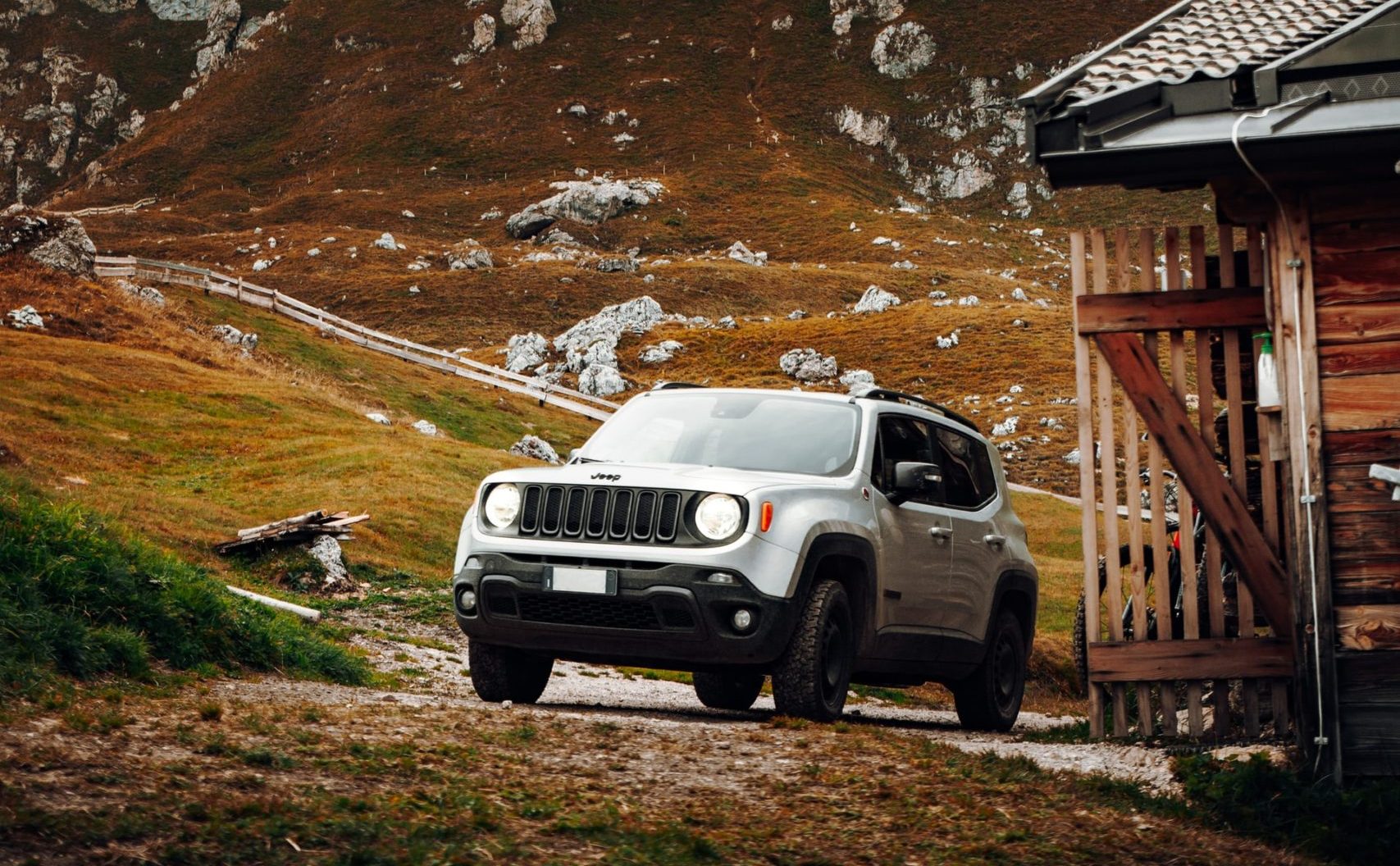
Last but not least, the Jeep Renegade is a powerhouse vehicle with its 4-wheel-drive system, so it’s well equipped to tackle even the most unforgiving terrain in harsh weather conditions. There are several engine options for this vehicle, but we recommend the 2.4-liter 4-cylinder engine for winter driving.
Consequently, the Renegade generates 180 horsepower and 175 pound-feet torque. It can tow up to 2000 pounds using the front tow hooks. It also features a 9-speed automatic transmission.
The Jeep Renegade also has auto, sand, mud, and snow modes, as well as driver-assist features including a reversing camera, electric parking brake, and hill hold control.
Wrap Up
There you have, a complete guide to driving a Jeep in the winter. So, are Jeeps good in the snow? Well, you can bet on it!
Whether it’s a Wrangler, a Cherokee Trailhawk, a Grand Cherokee, or a Renegade, Jeeps are generally built to handle driving in unfavorable weather conditions, and snow is no exception. They’re often equipped with power engineers and 4-wheel-drive systems to provide traction, as well as snow and mud modes to help improve your driving experience.

